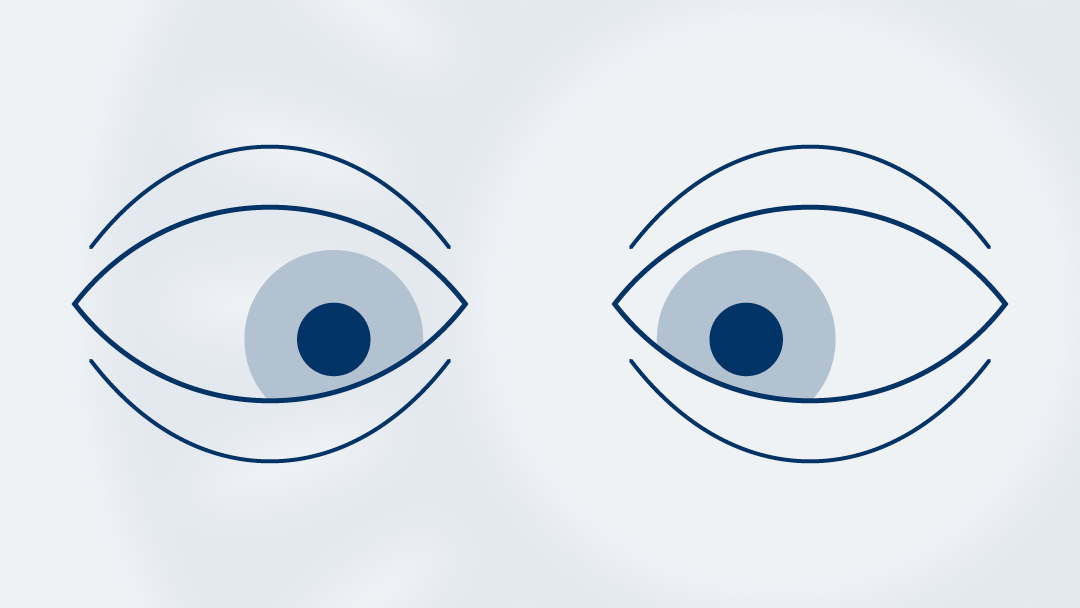
Age-related distance esotropia (ARDET) is the loss of paralelism between the shafts of the eyes and the target fixation, produced in adults over 65 years old. People affected by this pathology involuntarily deviate one or both eyes towards the nose. Thus, it is the opposite of exotropia, in which the deviation is towards the outside.
It is one of the main causes of diplopia in adults (a visual alteration that consists of a double vision perception) and has a higher prevalence in women.
Some of the factors that may cause age-related esotropia are physical changes from aging such as, for instance:

The alterations that ARDET generate can be identified through tests like magnetic resonance scanning. With this test, it will be possible to discern between age-related distance esotropia (when the deviation is symmetrical) and Sagging Eye Syndrome (when the deviation is not symmetrical in both eyes).
Another method to diagnose age-related distance esotropia is the Lancaster test. It is a totally painless test that allows to measure the deviation between the eyes.
During this test, two lights of different colors are projected on a screen. The patient sees them through a pair of glasses with a green lens in one eye and a red lens in the other one. The patient tells the optometrist where he/she is perceiving the projected light. With this information the deviation can be measured from the exact point where the light actually is and the reference from the patient.
In order to assign the rightful treatment for age-related esotropia, a couple more aspects should be taken into account: the deviation diopters of the patient and how the pathology affects their daily life.
If the deviation is under 10 diopters, possible treatments include visual therapy or using glasses with prisms. Both options can improve the patient’s condition, but they don’t correct the pathology.
Plus, one must keep in mind that this is a disease that evolves progressively due to deterioration associated with aging.
If the deviation is over 10 diopters, surgery upon the affected eye(s) can be considered. It is an intervention in which ophthalmologists can tighten the eye muscle for its rightful alineation. A small incision is made in the tissue that covers the eye and the muscles are re-positioned so that they go towards the same direction.
Visual alteration called esotropia is the deviation of one or both eyes towards the nose, inwards. It is opposed to exotropia, alteration in which the ocular globe is deviated outwards.
Usually it is associated with physical decline from the aging of the sheaves (the structures joining extraocular muscles).
It is also associated with preexisting myopia, neurological proceses, decompensated phoria or monofixation syndrome.
Depending on the case and the patient. It is possible to fix some of them through surgery.
It can also be treated with exercises for eye muscles or using glasses with prisms.
In any case, the ophthalmologist will assign the most adequate treatment for every patient.
No, age-related distance esotropia does not provoke vision loss. However it could cause diplopia, mainly in long distance sight.
Age-related distance esotropia: Clinical features and therapeutic outcomes Spanish Society of Ophthalmology
Esotropia American Academy of Ophthalmology
Contact us or request an appointment with our medical team.